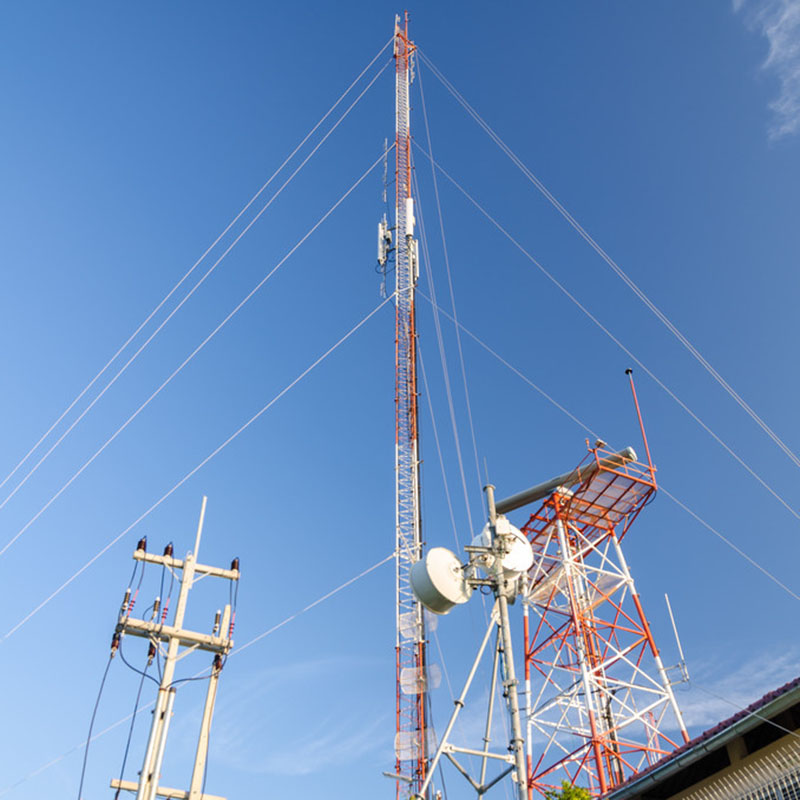Components and Features of Communication Towers
2024-06-11
A communication tower, also known as a cell tower, mobile tower, or telecom tower, is a structure designed to facilitate the transmission and reception of wireless communication signals. These towers are essential components of telecommunications networks, supporting various technologies such as cellular networks, radio broadcasting, television broadcasting, and wireless internet services.
Here are some key components and features of communication towers:
1. Tower Structure: Communication towers come in different shapes and sizes, ranging from lattice towers, guyed towers, monopoles, to stealth towers. The choice of tower structure depends on factors such as height requirements, environmental conditions, and aesthetic considerations.
2. Antennas: Antennas are mounted on communication towers to transmit and receive electromagnetic signals. Different types of antennas are used for specific purposes, such as cellular antennas for mobile phone networks, microwave antennas for point-to-point communication, and broadcast antennas for radio and television transmission.
3. Equipment Shelter or Cabinet: Communication towers often include an equipment shelter or cabinet at the base of the tower to house electronic equipment such as transmitters, receivers, amplifiers, and power supplies. These components are essential for processing and routing communication signals.
4. Guy Wires: Guy wires are used to stabilize tall communication towers, especially in guyed tower designs. These wires anchor the tower to the ground and provide additional support to withstand wind loads and other environmental forces.
5. Grounding System: A grounding system is installed to dissipate lightning strikes and electrical surges safely. It consists of copper grounding rods, conductors, and grounding grids buried around the tower base to provide a low-resistance path to earth.
6. Access Ladder and Platforms: Communication towers are equipped with ladders, platforms, and safety features to allow technicians and maintenance personnel to access the tower safely for installation, maintenance, and repair tasks.
7. Regulatory Compliance: Communication towers must comply with regulations and standards set by local authorities and regulatory agencies regarding safety, structural integrity, electromagnetic radiation exposure limits, and environmental impact.
Communication towers play a crucial role in enabling wireless communication services, connecting people and devices over vast geographic areas. They form the backbone of modern telecommunications infrastructure, supporting the growing demand for voice, data, and multimedia services in urban, suburban, and rural areas alike.



